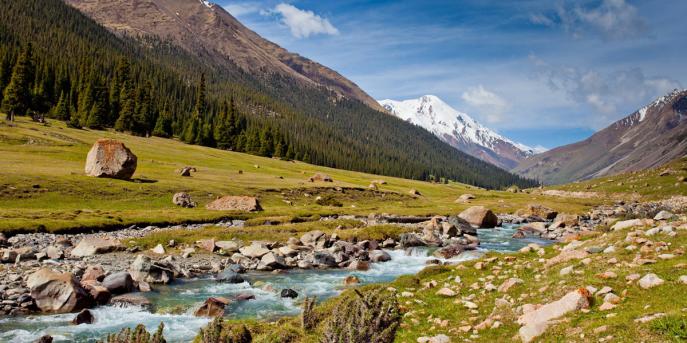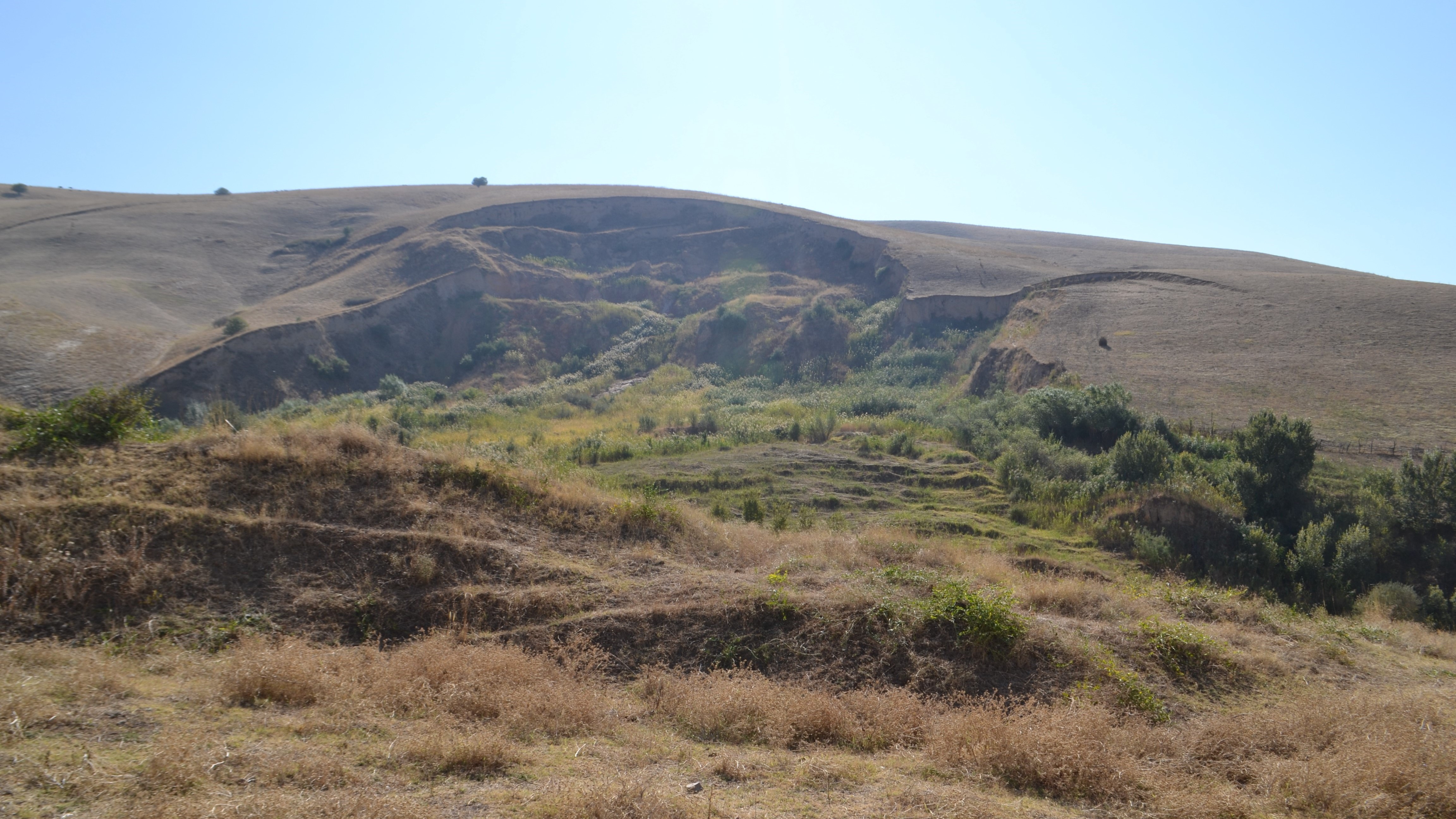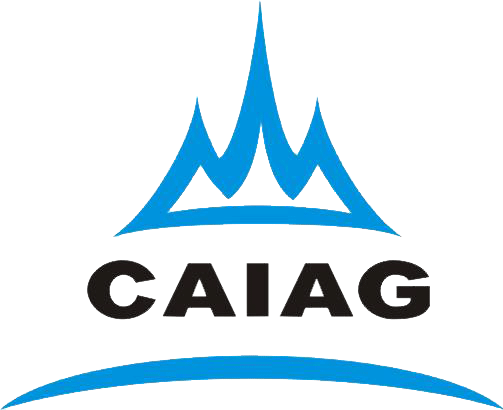The Kyrgyz Data cube
The Kyrgyz Data Cube (KDC) - https://kyrgyzstan.sibelius-datacube.org - contains over 18 years’ worth of satellite data and derived products about pasture, snow and drought, which potentially gives decision makers the best possible information about environmental conditions across the whole of Kyrgyzstan.
The KDC is an efficient way of storing large volumes of Analysis Ready Data with easy spatial and temporal access. It is based on the Open Data Cube methodology originally pioneered by Digital Earth Australia in 2013, with the Australian Data Cube. Recent years have seen several more Data Cubes deployed in places such as Mongolia, Switzerland, Columbia, Vietnam and Uganda. Digital Earth Australia have also created a community of users worldwide, who exchange information about Data Cubes. Their Slack channel is a useful place to interact with people with an interest in Data Cubes.
The aim of the KDC and its associated tools is to make satellite data and derived products available to specialists from a wide range of disciplines (agriculture, emergency situations, forestry, hydrometeorology, environmental problems and others) but who don’t necessarily have previous expertise in working with satellite data.
The KDC’s Visualisation Website allows access to a range of products from the Data Cube, including optical images which are available at 10 metre resolution. It is also possible to access data from the Data Cube to use in your desktop and Web GIS applications, such as ArcGIS, QGIS, GeoNode and others using the WMS service at the link:
https://kyrgyzstan.sibelius-datacube.org:5000/wms?version=1.3.0
In this case, the application window will display a georeferenced image of the selected product, on which it is convenient to superimpose any existing layer, for example, pasture boundaries.
ArcGIS and QGIS also allow you to use images of KDC products in another way - using the WCS service. This makes it possible to show the KDC value of the product for any pixel in the image. You can connect WCS layers using the link:
https://kyrgyzstan.sibelius-datacube.org:5000/wcs?version=1.0.0
The Kyrgyz Data Cube (KDC) was developed by eOsphere with the participation of Mercy Corps (Mersico) as a part of the SIBELIUS project, supported by the UK Space Agency’s International Partnership (IPP) and the Global Business Economics, Energy and Industrial Strategy Research Foundation.
An introductory presentation on the Kyrgyz Open Data Cube can be found here.
1. Data cube product list
 Products related to pasture conditions
Products related to pasture conditions
- Vegetation Index (NDVI) - active biomass indicator, showing the quantity of green vegetation
- Pasture Anomaly - showing the current state of the pasture in comparison with the usual pasture values measured from the historical data for the same time of the year
- Pasture Biomass - estimate of dry above ground biomass (kg/ha)
- Pasture Trend- estimate of the current state of the pasture, compared to the last time the pasture was measured, i.e. are the pasture conditions improving, staying the same or getting worse
 Products related to the state of snow
Products related to the state of snow
- Snow Percentage - the % of days when there was snow cover over a ten-day period
- Normalized Difference Snow Index (NDSI) - identifying snow cover while ignoring cloud cover
 Drought-related foods
Drought-related foods
- Normalized Difference Drought Index (NDDI) - pasture drought intensity
- Normalized Difference Water Index (NDWI) - The Normalized Differential Water Index is used to monitor changes of water content in leave
- Vegetation Health Index (VHI) -vegetation health estimation combines TCI and VCI indices
- Vegetation Condition Index (VCI) - estimate of vegetation condition, is an indicator of the current condition of vegetation in relation to historical values
 Temperature related products
Temperature related products
- Land Surface Temperature (LST) - measuring soil temperature at the surface of the Earth
Freely available Landsat 8 and Sentinel 2 Earth observation satellite images are used to obtain KDC products.
2. The use of KDC products in various fields
Livestock

Livestock is one of the leading agricultural sectors in Kyrgyzstan and its share in the structure of gross agricultural output is about 50%. The total area of pastures in Kyrgyzstan is 9 million 147 thousand hectares. They occupy more than 85% of the total agricultural area. Pastures close to settlements are often in the worst condition - they are sometimes completely degraded, since the population grazes cattle, mainly around villages..
Pastures are becoming less productive, overgrown with weeds, a decrease in biomass is also observed, and drought occurs. The problems are compounded by the lack of up-to-date information that the Kyrgyz Data Cube can help provide by providing off-the-shelf satellite data products to address some of these problems.
Applicable indexes:Vegetation Index (NDVI), Pasture Anomaly, Pasture Biomass, Pasture Trend, Vegetation Health Index (VHI), Vegetation Condition Index (VCI), Normalized Difference Snow Index (NDSI), Snow Percentage, Normalized Difference Drought Index (NDDI), Land Surface Temperature (LST)
Agriculture

Dry and semi-dry farming is associated with a high risk due to climate instability and is the cause of economic instability. The unsatisfactory use of agronomy and modern agricultural technologies have led to the development of many negative phenomena and large areas of agricultural land are in poor condition. The main problems of Kyrgyzstan are a decrease in soil fertility due to progressive salinization and alkalinization, over moisturizing and waterlogging of lands, wind and water erosion, and stone contamination. Information from the Kyrgyz data cube can be used to monitor and rationalize land use.
Applicable indexes:Vegetation Index (NDVI), Pasture Anomaly, Pasture Biomass, Pasture Trend, Vegetation Health Index (VHI), Vegetation Condition Index (VCI), Normalized Difference Snow Index (NDSI), Snow Percentage, Normalized Difference Drought Index (NDDI), Land Surface Temperature (LST)
Forestry

The forests of Kyrgyzstan play an extremely important role in maintaining ecological well-being, ensuring the species diversity of the animal world, preventing the drying up of rivers, streams and springs, as well as reducing the threat of mudflows and landslides. Forest ecosystems also play a leading role in biosphere processes. Despite the great economic importance of forest resources, their raw material reserves are being depleted and the expansion of unforested areas is progressing, which is hindered by a lack of experimental data and theoretical generalizations for scientifically grounded economic management. One of such gaps is the poor knowledge of the relationship and interaction of the forest biocenosis, both in natural conditions and as a result of anthropogenic intervention. This is another area where products from the Data Cube can help to address problems.
Applicable indexes: Vegetation Index(NDVI), Vegetation Health Index (VHI), Vegetation Condition Index (VCI), Land Surface Temperature (LST)
Hydrology and Meteorology

For monitoring and forecasting the weather, ground stations and posts are traditionally used, equipped with various sensors, for example, to measure temperature, precipitation, soil moisture, and others, scattered throughout the territory of Kyrgyzstan. It is clear that the more sensors are installed in the country, the more accurate the forecast will be. But their number cannot be very large due to the increasing cost of installing and maintaining stations. Satellite remote sensing provides real information that, while less accurate, complements traditional ground-based measurements. The Kyrgyz Open Data Cube can help with this by providing its products for hydrometeorologists on several parameters, including snow, soil moisture, and others.
Applicable indexes: Normalized Difference Snow Index (NDSI), Snow Percentage, Normalized Difference Drought Index (NDDI), Land Surface Temperature (LST)
Hazards and emergencies

The territory of Kyrgyzstan is characterized by the intensive development of dangerous natural processes associated with geological and structural features, a large dissection of the relief, climatic and hydrogeological conditions, and high seismicity. Hazardous natural processes and phenomena are widespread and often lead to emergency situations. Mudflows and floods cause 33.0% of all registered emergencies. Meteorological hazardous phenomena (wind, precipitation, air temperature, etc.) account for 13.2% of all emergencies, but at the same time they often lead to the manifestation of other dangerous processes. The intensification of landslides, rockfalls, the occurrence of about 70% of mudflows, floods, an increase in the level of groundwater depends on the amount and nature of the distribution of liquid atmospheric precipitation, accumulation and melting of snow cover and glaciers. The Open Data Cube can help to monitor several of these situations, for example glacial lakes can be monitored routinely using 10 m resolution imagery, to see if the lakes are changing in size and therefore possibly at risk of bursting and causing flooding.
Applicable indexes: Normalized Difference Snow Index (NDSI), Snow Percentage, Normalized Difference Drought Index (NDDI), Land Surface Temperature (LST)
3. Using Python
The KDC can be accessed locally through the Python API or through the JupyterHub, which requires some Python knowledge to access the data in it, and Google accounts to log in. This will allow researchers and users to create individual projects using products from the KDC and products not generated automatically by the Data Cube.
Key Python packages required to manage data in JupyterHub include: numpy, matplotlib, xarray, rasterio, rioxarray and dask. Knowing at least some of them will help to get the most out of the data in JupyterHub.
For those users who are not familiar with Python or do not have access to data through the Data Cube, there are several tutorials to get a better understanding of using data from the KDC. These modules are grouped into two categories:
Introduction lessons:
1. Introduction to Python (Objects, Lists & Loops)
2. Introduction to Python (Functions & Methods)
3. Introduction to Python (External Modules)
4. Introduction to Data Cubes
5. More Advanced Data Cube Usage
6. Exercise - Working with Condional statements and Loops
7. Exercises - Working with Numbers
8. Exercises - Working with Strings
More advanced lessons:
1. More Advanced Python – Import data files
2. More Advances Python – Using Shapefiles with Geopandas
3. More Advanced Data Cube Usage – Introduction to cropping products with shapefiles
4. More Advanced Data Cube Usage – NDVI Anomaly Map
5. More Advanced Data Cube Usage – Timeseries Analysis
6. More Advanced Data Cube Usage – Introduction to MODIS products and Snow Map
7. More Advanced Python – Introduction on how to manipulate DEMs
8. More Advanced Data Cube Usage – Interactive Crop Health




